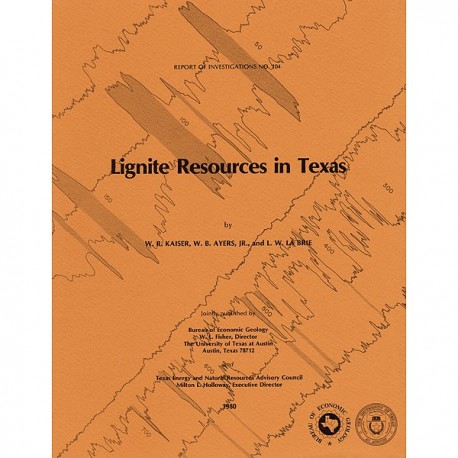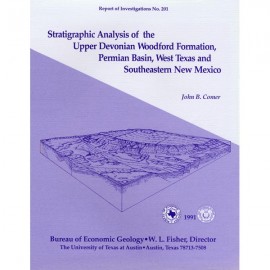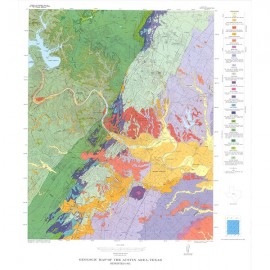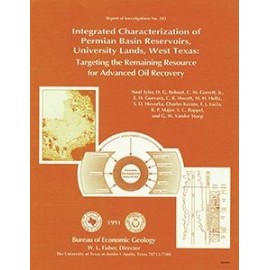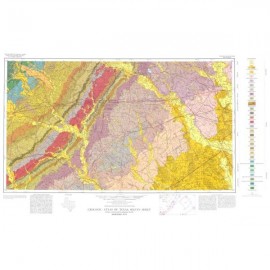Reports of Investigations
-
Books & Reports
- Reports of Investigations
- Guidebooks
- Udden Series
- Geological Circulars
- Down To Earth
- Atlases of Major Oil and Gas Reservoirs
- Texas Memorial Museum Publications
- Environmental Geologic Atlas of the Texas Coastal Zone
- Mineral Resource Circulars
- Other Reports
- Seminars and Workshops
- Handbooks
- Submerged Lands of Texas
- Symposia
- Annual Reports
- Open File Reports
-
Maps & Cross Sections
- Thematic Maps
- Miscellaneous Maps, Charts & Sections
- Geologic Atlas of Texas
- STATEMAP Project Maps
- Geologic Quadrangle Maps
- Cross Sections
- Highway Geology Map
- Energy and Mineral Resource Maps
- Shoreline Change and Other Posters
- Wilcox Group, East Texas, Geological / Hydrological Folios
- Bouguer Gravity Atlas of Texas
- River Basin Regional Studies
- Featured Maps
- Posters
- Teachers & the Public
-
Geological Society Publications
- Gulf Coast Association of Geological Societies
- Alabama Geological Society
- Austin Geological Society
- Corpus Christi Geological Society
- Houston Geological Society
- Lafayette Geological Society
- Mississippi Geological Society
- New Orleans Geological Society
- South Texas Geological Society
- GCS SEPM Publications
- Historic BEG & UT Series
Lignite Resources in Texas
RI0104
Lignite Resources in Texas, by W. R. Kaiser, W. B. Ayers, Jr., and L. W. LaBrie. 52 p., 31 figs., 18 tables, 1980. ISSN: 0082335X. Print Version.
A free, digital version of this publication can be found on: Texas ScholarWorks
RI0104. Lignite Resources in Texas, by W. R. Kaiser, W. B. Ayers, Jr., and L. W. LaBrie. 52 p., 31 figs., 18 tables, 1980. ISSN: 0082335X. Print.
To purchase this publication as a downloadable PDF, please order RI0104D.
ABSTRACT
Texas lignite occurs in three Eocene (lower Tertiary) geologic units--the Wilcox Group, Jackson Group, and Yegua Formation--and in three ancient depositional systems--fluvial, deltaic, and strandplain/lagoonal. Near-surface resources in Texas at depths between 20 and 200 ft (6.1 and 61 m) in seams 3 ft (0.9 m) or thicker are 23,377 million short tons (21,208 million metric tons) and are dominantly fluvial in origin. More than 90 percent of the resources occur in the Wilcox and Jackson Groups north of the Colorado River. The size of individual deposits ranges from 50 to 500 million tons (45 to 450 million metric tons). The average seam thickness is less than 5 ft (1.5 m); a 10-ft (3.0-m) seam is exceptional. Depending on mining depth, reserves are estimated to be 8,635 to 11,102 million tons (7,834 to 10,072 million metric tons). Deep-basin resources at depths between 200 and 2,000 ft (61 and 610 m) in seams 5 ft (1.5 m) or thicker are 34,819 million tons (31,588 million metric tons), 70 and 30 percent being in the Wilcox and Jackson Groups, respectively. Approximately 2.4 million acres (1.0 million ha) are leased for lignite; 84, 12, and 4 percent of the acreage is in the Wilcox, Jackson, and Yegua, respectively. Wilcox lignite is the best grade, Yegua is intermediate, and Jackson is the poorest grade lignite in Texas. Typical Wilcox lignite has a heating value of 6,500 Btu/lb (3,612 kcal/kg) and a 33-percent moisture, 1-percent sulfur, and 15-percent ash content.
Lignite reserves are adequate to meet the projected needs (6 to 7 billion short tons [5.4 to 6.3 billion metric tons]) of the electric utility and industrial sectors into the next century. Most of the lignite will continue to be used to generate electric power; however, lignite will be used in the future to produce synthetic fuels and chemicals.
Keywords: lignite, resource assessment, Eocene, Wilcox Group, Jackson Group, Yegua Formation, East Texas, South Texas
Citation
Kaiser, W. R., Ayers, W. B., Jr., and LaBrie, L. W., 1980, Lignite Resources in Texas: The University of Texas at Austin, Bureau of Economic Geology, Report of Investigations No. 104, 52 p.
